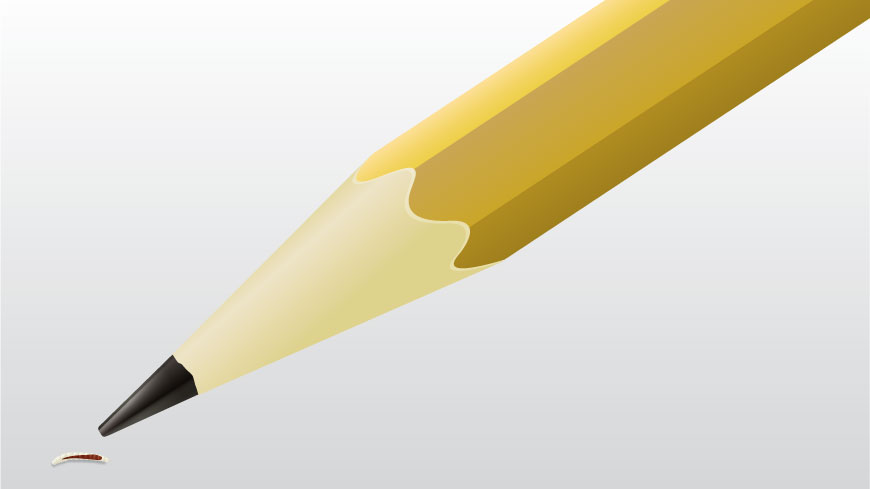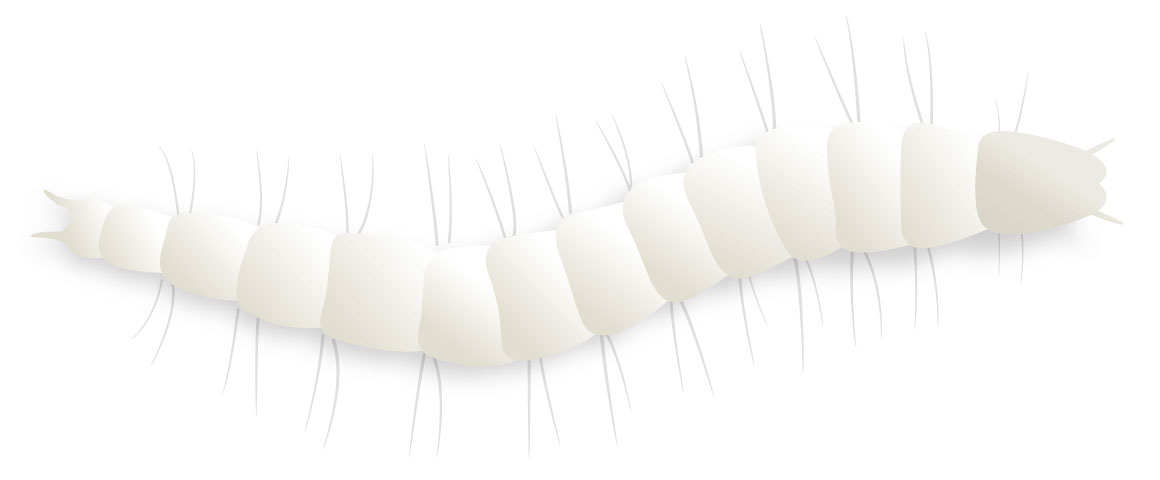
Img 1 Flea larva with a transparent body, red digestive track, dark head, anal struts, and bristles.
Summary
Newly hatched flea larvae are 2 mm long, growing to a final length of 5 mm. They’re a translucent white color, with guts that become visibly red once feeding begins. The larvae resemble worms or maggots. They have 13 body segments, each is sparsely covered with bristles. The larval head is a slightly darker color than the body. It contains mandibles.
Details
Larval Instars
Cat flea larvae develop through three stages, taking the form of 1st, 2nd, and 3rd instars. They molt once between each stage. Shedding their cuticle allows for growth. Thus, each instar is progressively larger. Mature third instars are referred to as prepupae. At this point, they’ll begin spinning a cocoon to prepare to pupate.
Newly Hatched Larvae
Size
Upon hatching from eggs, larvae measure around two millimeters in length. The “baby fleas” are large enough to see with the naked eye, but they’re rarely seen because they actively avoid sunlight (negatively phototactic). Flea larvae quickly burrow deep into carpet fibers or other substrates where light can’t penetrate.
Vid 1 Video of a cat flea larva crawling around a dog’s bed. See the pointing finger for a size comparison.

Img 2 Illustration of a cat flea larva compared to the size of a sharp #2 pencil tip (1 mm).
Color
Newly hatched larvae are a semi-transparent, white to off-white color.
Shape & Structures
The larval body is slender and vermiform (worm-like). It’s comprised of 13 segments: 3 thoracal (breast) segments and 10 abdominal (belly) segments. Setae (bristles) are found on each segment, as well as the head. They arise from sclerotised plate-like structures. Two hooks, called anal struts, project backwards and downwards from a swollen anal mound on the last segment.
Flea larvae are apods, they don’t possess legs or other appendages. Still, they’re surprisingly mobile. Larvae move by contracting and relaxing their skin tube muscle. The anal struts and bristles to help facilitate the movement.

Img 3 Illustration of a newly hatched cat flea larva with 13 body segments, a white body, a brown head, bristles, and exaggerated anal struts.
Head
The head capsule is distinct from the rest of the body. It’s a darker, yellow-brown color and is sclerotised (hardened). Young larvae have heads which are longer than the other body segments. The head bears prominent antennae, which project from mounds. Larvae don’t have eyes.
The head contains powerful mandibles, which are well-adapted for biting and chewing. These mouth-parts allow larvae to be free-living, as they can rasp away at solid food sources.
A sharp spine projects from the front of the head. It helps a larva rupture its egg shell and hatch. The egg burster spine is only found on first instars. It’s lost in the first molt.
As the Larvae Develop
Size & Shape
For the most part, all three instars are structurally alike. There’s no clear-cut way to differentiate between them. Flea larvae look similar at all stages of development. However, they do increase in size after each molt. As they grow, the once large head becomes proportional with other body segments. So, mature larvae appear to have smaller heads than young larvae, giving their overall body a more tapered look from back to front.

Img 4 Illustration of a cat flea larva as it develops through 3 instars, progressively growing larger and obtaining a red gut once feeding begins.
Color
Dried blood feces from adult fleas is the primary food of larvae. As a larva feeds on flea dirt, its gut turns a dark red to purple color. The red digestive tract becomes clearly visible through its translucent body, giving the whole larva a darker tone. It’ll appear a yellow-brown color.
Prepupae Larvae
Size
Mature 3rd instar larvae end up at a final length of 4-5 millimeters. This is nearly twice as long as an adult cat flea. However, before pupating, the larval body somewhat shortens in length. This gives them a short, fatter look. Mature larvae are 0.5 mm thick.
Color
Larvae prepare to pupate by shedding their gut contents in a final defecation. After voiding their red guts, the larvae are once again a solid, milky-white color. They’re sometimes called clear-gut larvae due to their white appearance.
Shape
Prepupae will find an undisturbed location, bend themselves in half, and begin spinning a cocoon. At this point, they’re referred to as U-shaped or V-shaped, named for their appearance when folded. The larvae remain in the U-shape within their cocoons as they transition into pupae. Occasionally, larvae pupate without cocoons (naked pupae).




You must log in to post a comment. Log in now.
There’s these worm like things crawling along the walls of my home( mostly the corners) Nd I’m tryna see if there flea eggs or something else
They may be flea larvae. However, probably not, since flea larvae actively avoid sunlight and hide in dark locations. Most likely it is some other pest. Perhaps carpet beetle larvae?